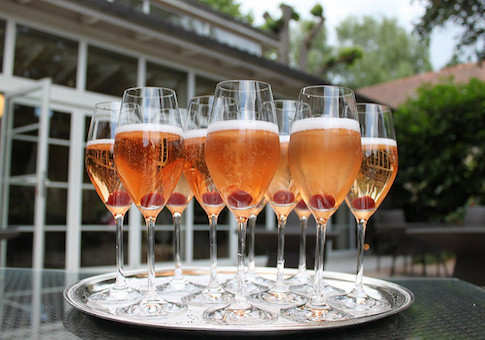According to historian Antony Beevor, during the battle of Stalingrad, the Wehrmacht issued a memo concerning soldiers of the Italian 8th Army:
You should treat them politely, and a political and psychological understanding is necessary … The climate and environment in Italy makes an Italian soldier different from a German soldier. Italians tire more easily on one hand, and on the other they are more exuberant. You should not be superior towards our Italian allies who came here fearlessly into hard and unfamiliar conditions to help us. Don’t call them rude names, and don’t be sharp with them.
There were reasons for this memo. As Beevor relates in Stalingrad, after a battalion surrendered without firing a single shot, the Italian sergeant explained to his Soviet captors, "We did not fire back because we thought it would be a mistake."
Blame the aperitivos.
Imagine yourself in one of those outdoor cafés in Milan, sipping a Campari and soda. Or picture Betty Draper having that asti spumante in Rome (where the Italian guy says to her, "If I were that cigarette in your mouth, I would die of happiness"). Or even Jude Law and Matt Damon in The Talented Mr. Ripley (no, not the bathtub scene, but the one at the jazz club). Seriously, what’s the hurry?
There’s an obvious allure to this aperitivo culture—soaking in the late-afternoon sun, sipping a light cocktail, having a small bite, all before returning home for dinner (admittedly not the most productive culture). But will this ever catch on in America?
It’s happening already. Go to your nearest liquor store and you will easily find bottles of Campari and sweet vermouth. But you may also come across Cocchi Americano, Aperol, amaro, and Fernet Branca. In select locations, Starbucks has launched "Starbucks Evenings," in which beer and wine are made available just as coffee shops in Italy convert into bars at night.
Earlier this week I attended a discussion entitled "Aperitivo: Happy Hour Italian-Style," presented by Smithsonian Associates. About 160 guests showed up to the S. Dillon Ripley Center here in Washington, all of them interested in learning more about this growing movement (and obviously interested in the food and drink offerings afterward). On stage, Ian Wolff, former wine and spirits editor at La Cucina Italiana, interviewed Marisa Huff, author of Aperitivo: The Cocktail Culture of Italy.
As Huff explained, the aperitivo culture is distinctly a northern Italian phenomenon. Vermouth originated in the 1700s in Turin as a table wine blended with botanicals and fortified with stronger alcohol. It was first available in pharmacies and used for medicinal purposes. Aperol, meanwhile, came out of Padua in 1919. And Campari, the most famous of all Italian bitters, was invented in the 19th century and is based out of Milan. It was here that the Campari and soda originated. Then the soda was replaced with gin, resulting in the Negroni.
It’s strong, to be sure (equal parts Campari, sweet vermouth, and gin), and an exception. As Huff points out, most of these drinks are remarkably low in alcohol—so much so that at some rest stops along Italy’s autostrade, drivers can take in a quick aperitivo and be back on the road in no time.
But can you really go to a bar and ask for an Aperol Spritz without conjuring the image of Ned Flanders? It’s nowhere near as manly as ordering a double-Maker’s on the rocks. On the other hand, these Italian-style happy hours are not about getting wrecked. They’re about small drinks and small bites. (Following the talk, two kinds of aperitivos and a variety of crostini were provided by Urbana, a local Italian restaurant. And judging by the long lines, I suspect some of these guests were making this their dinner.)
In the process of adding to our own cocktail culture, Huff suggests throwing your own aperitivo party. After assembling a small collection of bitters, a few choice spirits, soda, and garnishes, have your guests mix and match, experimenting in order to find the perfect drink. As Huff reminds us, unlike many American cocktails, this is not an exact science. She joked about recipe books with no precise measurements at all, just basta this and basta that. It sounds irresistible. And who knows, in a year or two, you may be ordering a Cocchi Americano at your neighborhood TGI Fridays. Of course it’ll come in a goblet the size of a punch bowl, but still.
